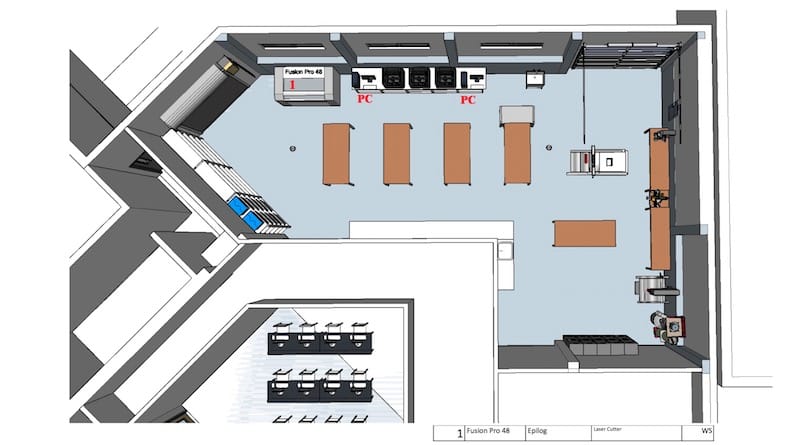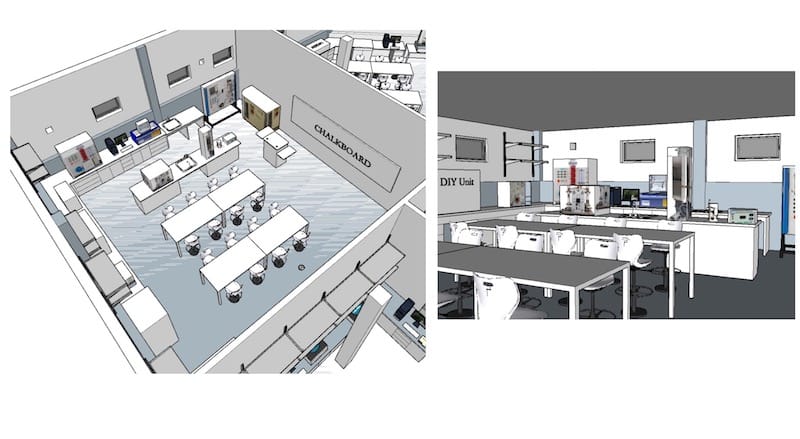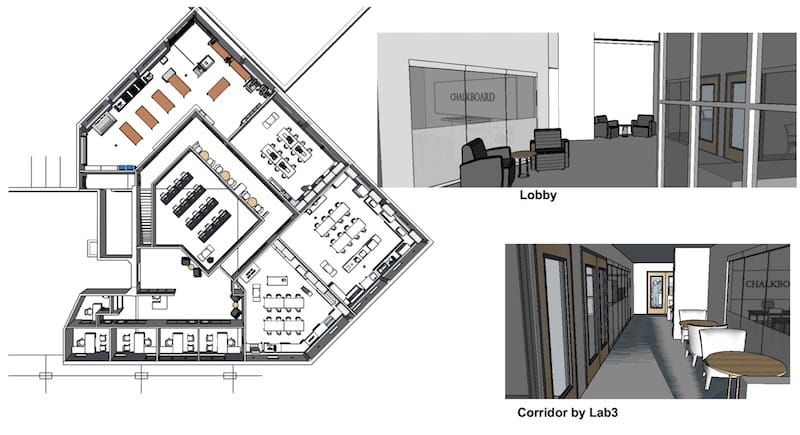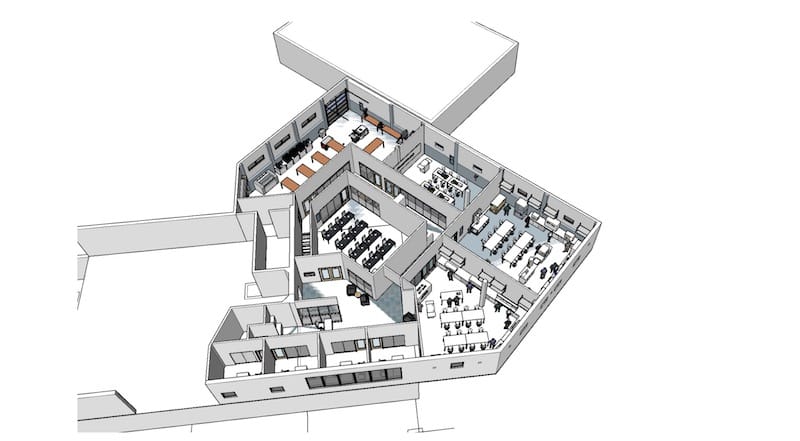Renovations Underway for Mechanical Engineering
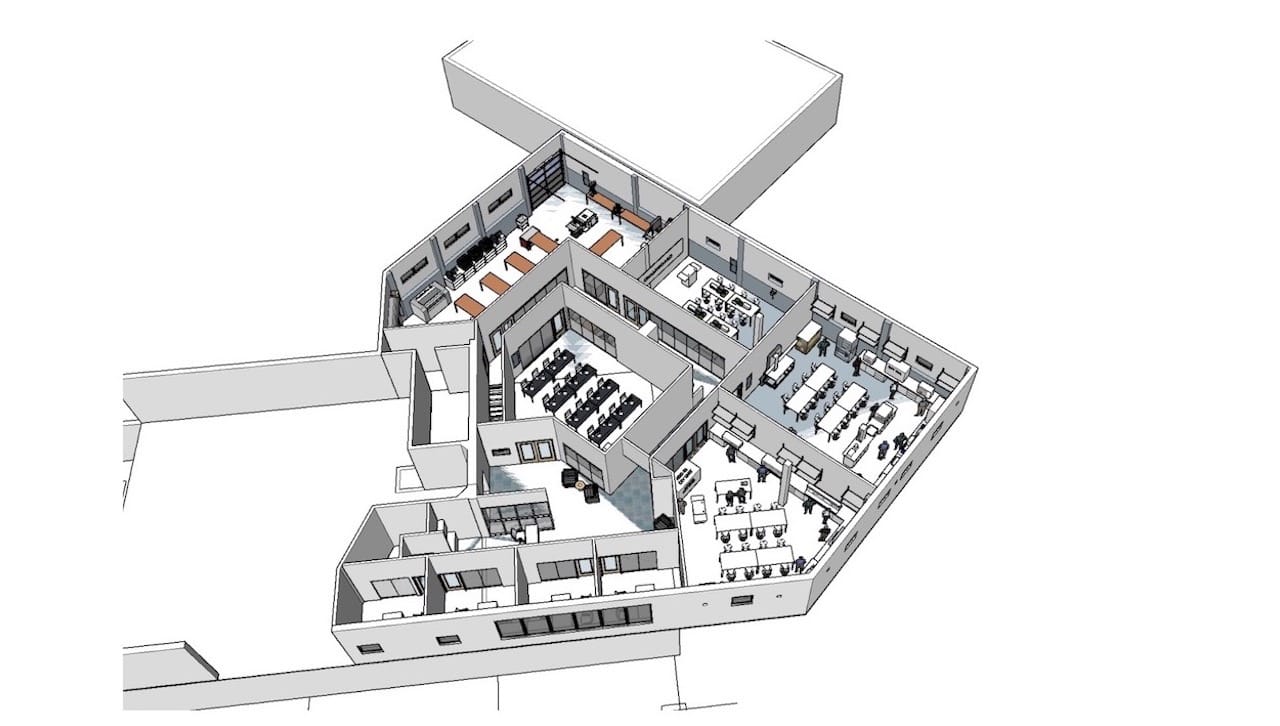
The University of Scranton has begun construction on the reconfiguration of 5,300 square feet of the first floor of Hyland Hall into state-of-the-art learning and laboratory space for its new Mechanical Engineering Program. The renovated space on the ground floor of Hyland Hall, which will be completed for the start of the 2021 fall semester, will include three laboratories, a workshop, a machine shop, and a 16-seat computer lab, as well as faculty offices and a student lounge area.
“The Physics and Engineering Department at Scranton emphasizes active and applied learning methods to educate our students,” said W. Andrew Berger, Ph.D., professor and chair of the University’s Physics and Engineering Department. “The renovated facilities will allow us to use the latest in laboratory, simulation and modeling techniques to prepare our students to be successful in their professional careers in mechanical engineering.”
In the renovated space, mechanical engineering students will experiment with several pieces of equipment in solid mechanics, fluid mechanics, thermodynamics, control, dynamics and vibration labs. Students, like aerospace scientists, will work with a wind tunnel, where they will determine important fluid characteristics by measuring aerodynamics pressures, forces and moments applied to aerodynamics models such as airfoil models by the airflow in laminar and turbulent flows. They will also investigate the behavior of engineering materials by performing precise tensile and compression tests using state-of-the-art Instron equipment to determine material properties such as strength, modulus of elasticity, yield and failure stresses of standard engineering materials.
“We prepare our Mechanical Engineering students to take the position they deserve by focusing on the applied sciences in engineering, experiments and manufacturing, and research that it is essential in future careers of the students,” said Amir Hosein Zamanian, Ph.D., assistant professor of mechanical engineering at Scranton.
Dr. Berger said that engineering faculty members are actively engaged in research and often involve undergraduate students in their lab work to enrich the student learning experience. In addition, students frequently participate in internship opportunities to expand their skills and experience, as well as mentoring and individual advising with faculty members to fully develop their aptitude and interests.
“As a Jesuit and Catholic university, the rigorous curriculum at Scranton not only challenges students, it reinforces ethical, professional and socially conscientious practices,” said Dr. Berger. “Our graduates are prepared well to face the technical and ethical challenges of the future.”
Mechanical engineering is one of the oldest and broadest of the engineering disciplines and involves the design, production and operation of mechanical systems and thermal systems. The program will allow the students to specialize in several areas, such as biomechanics, energy conversion, laser-assisted materials processing, fracture mechanics, vibrations and combustion.
Students graduating in mechanical engineering will be prepared to work in a wide array of fields, including the automotive and aerospace industries, manufacturing, electronics, mechatronics and nanotechnologies.
Earlier this year, the University received a $1.5 million Redevelopment Assistance Capital Program (RACP) grant in support of its new mechanical engineering major, which includes the reconfiguration of instructional space in Hyland Hall. Additional renovations are planned for the fourth floor of Hyland Hall which will begin in late summer and be completed for the spring 2022 semester.
In addition to mechanical engineering, which the University began to offer in the fall of 2020, other majors offered by the University’s Physics and Engineering Department include computer engineering, electrical engineering, engineering management, biophysics and physics.
For additional information, contact the University’s Office of Undergraduate Admissions at 888-727-2686 or email admissions@scranton.edu.


